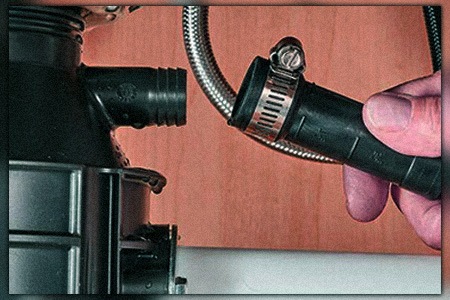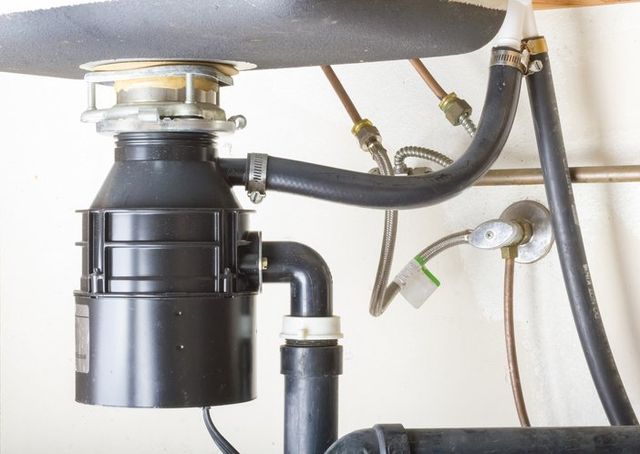Rapid Fixes for a Dripping Garbage Disposal
Rapid Fixes for a Dripping Garbage Disposal
Blog Article
How do you actually feel when it comes to Why Is ?

Waste disposal unit are necessary kitchen area home appliances that help in getting rid of food waste efficiently. Nonetheless, a leaking garbage disposal can be an irritating and untidy trouble to take care of. Fortunately, several leaks can be dealt with quickly with a couple of easy actions. In this article, we will review how to take care of a dripping garbage disposal successfully.
Intro
Garbage disposals are set up under kitchen sinks and are designed to shred food waste right into smaller sized items, permitting it to pass through the pipes system easily. While these tools are normally reliable, leakages can take place over time as a result of wear and tear, loose connections, or damage to the device.
Step-by-Step Overview to Dealing With a Dripping Waste Disposal Unit
Shut off the Power
Before trying any kind of repair services, guarantee that the power to the garbage disposal device is shut off to prevent the threat of electrical shock.
Locate the Leakage
Determine the exact place of the leak and establish the cause
Tighten up Links
Make use of a wrench to tighten up any kind of loosened connections between the disposal unit and the plumbing system.
Replace Seals or Gaskets
If the leak is due to worn seals or gaskets, remove the old components and replace them with new ones.
Patching Cracks or Holes
For splits or openings in the disposal device, usage epoxy or an appropriate patching material to seal the broken location.
Recognizing the Source of the Leak
Before trying to fix a dripping waste disposal unit, it is important to identify the resource of the leakage. This can usually be done through aesthetic assessment or by carrying out simple examinations.
Visual Assessment
Inspect the garbage disposal unit very carefully for any type of indications of water leakage. Pay very close attention to areas around seals, gaskets, and link factors.
Checking for Leaks
One method to evaluate for leakages is by running water via the disposal device and checking for any visible signs of leakage.
Common Causes of Leaks in Garbage Disposals
Worn Seals and Gaskets
Seals and gaskets play an important role in preventing water from leaking out of the waste disposal unit. With time, these elements can weaken, resulting in leakages around the disposal system.
Loose Connections
The links between the waste disposal unit and the pipes system can become loosened in time, creating water to leak out throughout operation.
Splits or Holes in the Disposal Device
Physical damage to the waste disposal unit, such as splits or holes in the real estate, can also lead to leakages.
Tools and Materials Needed for Dealing With a Leaking Garbage Disposal
Before beginning the fixing procedure, gather the essential devices and materials, consisting of a screwdriver, adjustable wrench, plumber's putty, substitute seals or gaskets, and epoxy or patching material for fixing fractures or openings.
Evaluating the Waste Disposal Unit After Repair Service
Once the repair service is complete, check the waste disposal unit by running water with it to make certain that the leak has been settled.
Preventive Upkeep Tips to Prevent Future Leaks
To prevent future leakages, it is necessary to carry out routine maintenance on your waste disposal unit. This includes keeping it clean, preventing putting non-food things or hard items down the disposal, and occasionally checking for leaks or other issues.
Conclusion
Finally, repairing a dripping garbage disposal is a reasonably straightforward process that can be finished with basic tools and products. By following the steps detailed in this article and practicing precautionary upkeep, you can maintain your waste disposal unit in good working condition and avoid expensive repair services in the future.
What to Do About a Leaking Garbage Disposal
A leaking garbage disposal often goes unnoticed until you confront a sopping cabinet, a foul-smelling puddle, or an audible drip-drip-drip from the unit. The fix can be frustrating, too, because the leak can stem from a number of components in the system. Fortunately, with a little sleuthing, you can zero in on the leak and—depending on the exact location—stop the icky oozing and repair the component that caused it. Worst case scenario, if it turns out that the garbage disposal must be replaced, installing a new one is a reasonable do-it-yourself task for those with basic plumbing skills. Read on to keep the cash you’d otherwise hand over to a pro.
Prepare to find the leak
Prior to testing the garbage disposal for leaks, unplug it at the wall outlet and turn off the power from the breaker box to prevent electrical shock. Then insert a watertight sink stopper into your sink drain and wipe the unit dry with a clean cloth. In any handy container, mix a few drops of food coloring into a few cups of water, and pour the dyed water onto the sink stopper to help you locate the leak.
Investigate the source
the top, where the disposal meets the sink drain the side, where the dishwasher hose or main drain pipe connects to the disposal or the bottom of the unit Inspect each of these locations while gliding a light-colored rag over the unit; the dyed water will readily show on the rag and reveal the location of the leak. If a leak isn’t immediately apparent, remove the sink stopper and pour a few more cups of dyed water down the sink drain, then check for leaks again. Leaks near the top of the unit are more likely to show themselves while the sink is plugged, while side and bottom leaks are more noticeable while the sink is unplugged.
The metal sink flange that sits directly inside the sink drain is typically sealed around the top with plumber’s putty (a clay-like sealant) and then secured from under the sink with bolts. If the plumber’s putty deteriorates, or the bolts loosen, the flange can no longer form a watertight seal between the sink drain and the disposal—which could cause a leak at the top of the unit.
To reseal the leaky flange, you must first detach the garbage disposal. Start by loosening the screws securing the main drain pipe to the disposal, then loosen the screws in the metal clamp securing the dishwasher hose to the disposal and detach the drain pipe and dishwasher hose from the disposal. Loosen the screws in the mounting ring that connects the disposal to the metal mounting assembly beneath the sink, then pull down the disposal and carefully set it on a clean, dry surface. Loosen the bolts in the mounting assembly with a wrench, then pull down the mounting assembly and set it near the disposal.

I ran across that piece of writing on Garbage Disposal Leaking From Bottom when exploring the web. Are you aware of someone else who is truly interested in the topic? Feel free to share it. Thank you so much for taking the time to read it.
Article Report this page